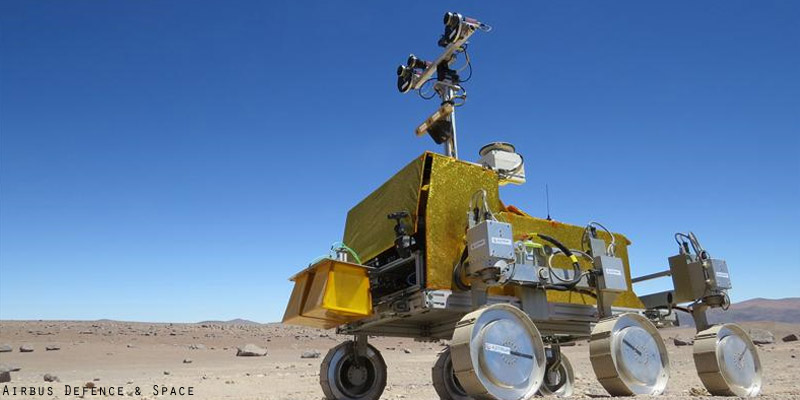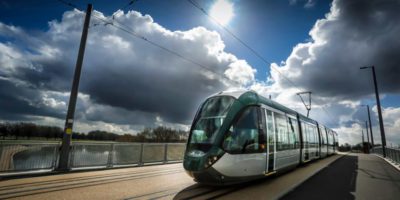Abbie Hutty is a Senior Spacecraft Structures Engineer at Airbus Defence and Space in Stevenage, where she is currently working on the ExoMars Rover mission; Europe’s first rover mission to Mars. She holds a Master’s degree in Mechanical Engineering from the University of Surrey, where she graduated first in her class. Abbie co-ordinates a team of specialists to achieve a rover structure that will survive the rigors of a rocket launch, descent through the atmosphere of the Red Planet, and landing on the surface, followed by an operational lifetime in the punishing Martian environment.
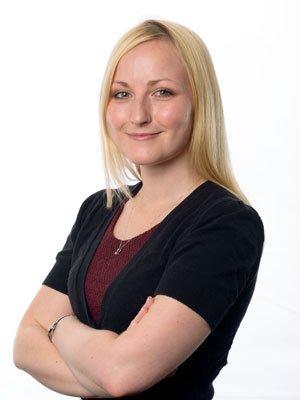
“…we have very strict planetary protection protocols in place to make sure that we don’t contaminate Mars with Earth organisms, so that we can learn about any life that exists, or previously lived, on Mars, and answer the fundamental question of whether we are alone in the Universe, or whether life can or did evolve elsewhere…”
Abbie, we’ve chatted to you before, but as a recap for those who missed your original blog for us, please can you briefly remind us about your role and when you first realised that engineering was the vocation for you?
I work for Airbus Defence and Space as a Spacecraft Structures Engineer. The mission I’m currently working on is the ExoMars Rover, which is a European Space Agency (ESA) mission – Europe’s first rover mission to Mars.
My team is responsible for the structure of the rover – the body – making sure it is strong enough to withstand the launch and landing, and that it performs all the secondary functions required of the structure – such as thermal insulation, electrical grounding, bio-containment and so on.
The thing that inspired me to follow a path into engineering was actually also a British-led Mars mission – Beagle 2. I remember seeing it in the news when I was trying to decide on a future career path – and hearing that British engineers were working on this high tech mission to Mars really made me stop and think about what other cool things engineering could lead to.
Please can you tell us a bit more about your work on the ExoMars Rover mission and what the greatest technical challenges are that you face on the project?
As I say my role is a Senior Spacecraft Structures Engineer. Basically I picked up the concept design that was originally set out when the rover was first proposed, and have developed the structure to meet all of the specifications that are required of the final design.
That means a lot of detailed design work, coming up with new concepts for areas that wouldn’t have worked in the original basic scheme, working out what materials to use and how to manufacture them, how to provide the secondary functionality like grounding, thermal insulation and so on, testing everything until we’re confident that it will meet the requirements, and managing any difficulties that arise during the manufacture of the final rover. It’s a very varied role and there is always something new to think about.
A couple of big technical challenges are the thermal environment on Mars – which is very cold but also fluctuates widely from day to night, which can be very damaging to structures, and also the fact that everything has to be built to be very sterile, so that we don’t contaminate Mars with Earth life, which is not something we have to consider every day, so involves a lot of learning!
We have loads of other weird problems though, like structure erosion due to Martian dust storms, making the structure stiff enough to not be damaged by the vibrations during launch or landing, and using materials that aren’t organic (again, so that we don’t contaminate Mars with Earth life) to name just a few…
From your knowledge and experience to date, can you envisage a time when travel to Mars will be possible?
At the moment I think it is too soon to safely send humans to Mars – we need to work out how to protect them from the radiation in deep space and once they get to Mars, and we’d need to build some infrastructure on Mars to support them once they get there, otherwise it would be a really sucky place to go! I think of it a bit like when the first Europeans landed in America – they just didn’t have the resources to survive. This would be even worse – at least in America we had the basics like oxygen and water!
We also have to be responsible about how we go about sending humans there – at the moment we have very strict planetary protection protocols in place to make sure that we don’t contaminate Mars with Earth organisms, so that we can learn about any life that exists, or previously lived, on Mars, and answer the fundamental question of whether we are alone in the Universe, or whether life can or did evolve elsewhere.
You can’t sterilise a human to prevent contamination, so if we start sending people there that all goes out of the window. I absolutely believe that one day mankind will land on Mars, but I think we’re a little way off yet! Maybe any young readers thinking that they’d like to work on those problems should consider coming into engineering..?
You’re a recipient of an IET Young Woman Engineer of the Year award. Why is celebrating success so important for women and how has this recognition accelerated your career?
A lot of the problems faced in recruiting engineers stem from a widespread misunderstanding of the profession. The word “engineer” can be used to refer to so many different jobs that it’s very confusing for students – and their parents, teachers and careers advisors, to understand what the roles actually entail.
Role models are one way of showing those outside the profession what it really looks like to be an engineer. In this instance, the award was specifically aimed at showing what it could be like to be a Young Woman Engineer, as the IET recognise that this group is under-represented in the UK engineering workforce – but I think it’s important that we show all groups valid role models, so that they can see that people like them have become engineers, enjoyed it, and been successful.
Personally, the award meant that I got to represent the industry at some high profile events, and to talk about my experiences in engineering to different groups – like politicians and decision-makers. It also raised my profile within the company – I got personally congratulated by some very senior personnel within Airbus who might not have known who I was previously, so that can never be a bad thing!
Please can you tell us about the #ILookLikeAnEngineer campaign on social media, how this came about and why you got involved?
I follow a lot of inspirational engineers worldwide on Twitter, so I saw the #ILookLikeAnEngineer hashtag quite early. It started with a young female engineer in California who had featured in a company publicity campaign to promote engineering careers, but her photo in the adverts had received a whole load of quite frankly bizarre comments online about how she couldn’t possibly be an engineer, and “who were they kidding” trying to pass this woman off as an engineer.
She set up this campaign online, encouraging all engineers who didn’t feel they fit the stereotype of “what an engineer looks like” to share a picture of themselves with the hashtag #ILookLikeAnEngineer. Having been on the receiving end of comments along similar lines before – about how I don’t look like an engineer, or I can’t possibly be an engineer as I’m too “girly” or “pretty”, it’s a subject I feel pretty strongly about- so of course I had to join in!
I’m a Spacecraft Structures Engineer for @AirbusDS – my current job is designing Mars Rovers… #ILookLikeAnEngineer pic.twitter.com/0hMHGuVK3I
— Abbie Hutty (@a_hutty) August 4, 2015
It ended up getting quite big and even making the news – and I think it was a really positive outcome – all these engineers who don’t fit the stereotype because of their gender, or race, or age, or sexuality, just showing themselves as they really are, and saying, “Actually, this is what I look like, and I AM an Engineer.”
I think the message that anyone can be an engineer is really important, and any publicity we can get that shows the variety of individuals having successful engineering careers is a valuable tool in breaking down the stereotypes that might hold people back from following their own path into the profession.
You were a speaker at this year’s Ada Lovelace Day Live event. Please can you tell us a bit about this, how it came about and what was the reaction was like to your talk?
Ada Lovelace Day is a day celebrating women in all STEM fields. Ada Lovelace was relatively unknown until recently, but it has emerged that she was at the forefront of early computer science – actually writing code for computers before those computers were even fully built!
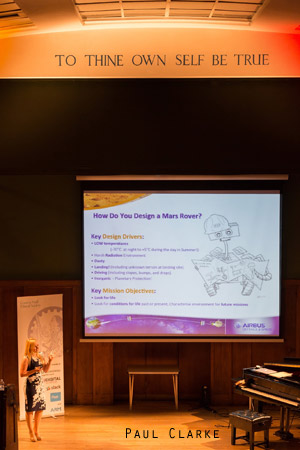
The day now marks an occasion to celebrate other women in STEM professions, and to highlight the impact that women have had historically and continue to have in all areas of STEM. Again it is about providing role models, and showing young people considering their career options, as well as the broader public, that loads of women DO work in STEM professions – and always have, and that they make a huge contribution to those industries, and enjoy their careers as well!
I was asked to talk at a live event in London, where there were actually six speakers, from some very diverse STEM fields such as nanomaterials, visual effects, theory of music and space engineering, all talking about their work. It was a great event to be part of – quite apart from the fact that the people talking all happened to be women, the work they all do was fascinating and inspiring – it was great to get an insight into some really interesting fields.
There was controversy recently when an all-female Russian crew were asked at a press conference ahead of an eight day space simulation exercise how they would cope without men and make up. How do we move the narrative forward and change perceptions of women so questions like this become a thing of the past?
This is just such a dull rhetoric, and so weird that anyone would even contemplate that women might be any less capable than men of co-existing in a confined (and in this case, single gender) environment. Or that women can’t cope without make up. It was a patronising, though I have to say, not entirely surprising line of questioning.
I think the way they answered was perfect – Anna Kussmaul, said: “We are doing work. When you’re doing your work, you don’t think about men and women.”, and her colleague Darya Komissarova countered the quip about make up with “We are very beautiful without make up.”
This kind of questioning is just a sign of how outdated the media can be. You see it across professions – male film stars asked to comment on the serious messages of the film while their female counterparts are asked about their wardrobe. I think the only way to really counter this is show how irrelevant these kinds of questions are with suitably dismissive answers, and to move on to make sure the real message is heard – the scientific value of the mission, the technological outcomes of the experiments, what we are gaining by undertaking these endeavours.
It won’t change overnight but hopefully we can incrementally move the dialogue on until we get to talk about what really matters – which is the real purpose of the activities in the first place.
What is next for you and the ExoMars Rover mission at Airbus?
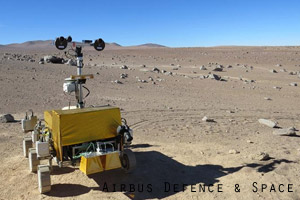
We’re also about to start the structure manufacture – which is a very exciting time as we finally get to see all of our hard work and ideas turning into a real, tangible rover! Once the structure is ready the other equipment and sub-systems can start to be integrated into the body, and our rover will begin taking shape…
https://airbusdefenceandspace.com/
https://www.linkedin.com/company/airbus-defence-and-space
https://www.youtube.com/user/airbusds

